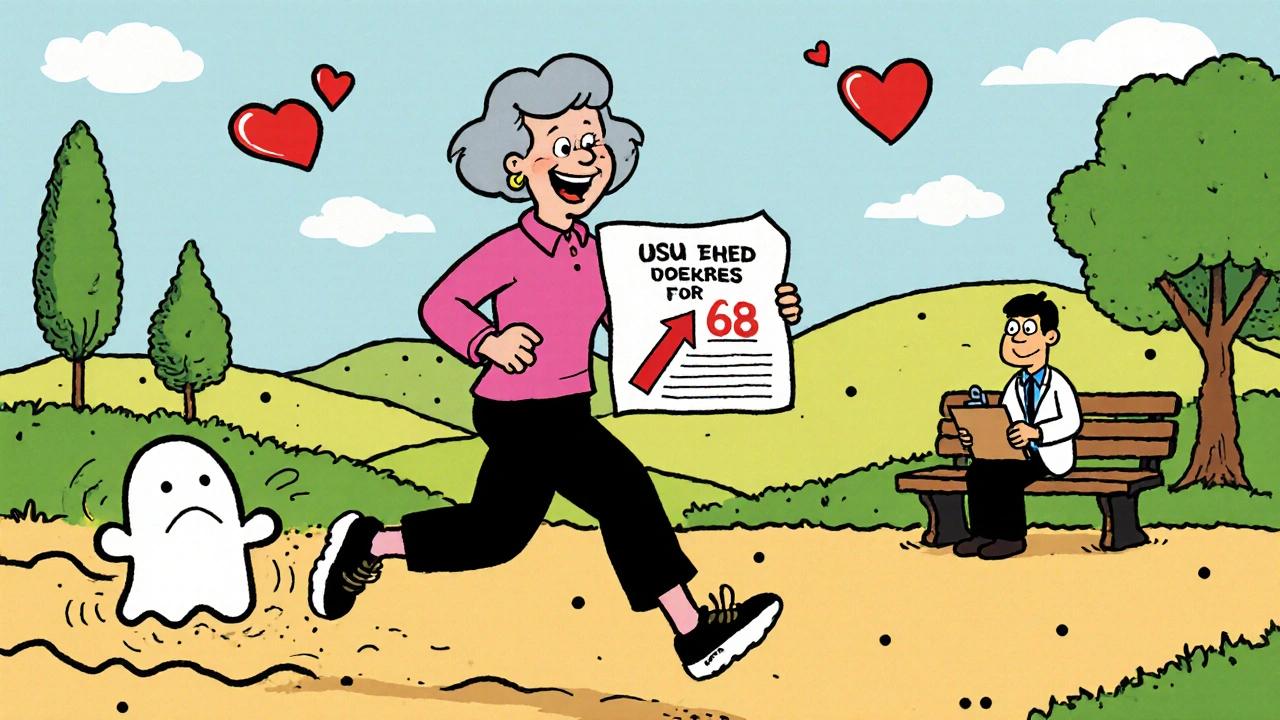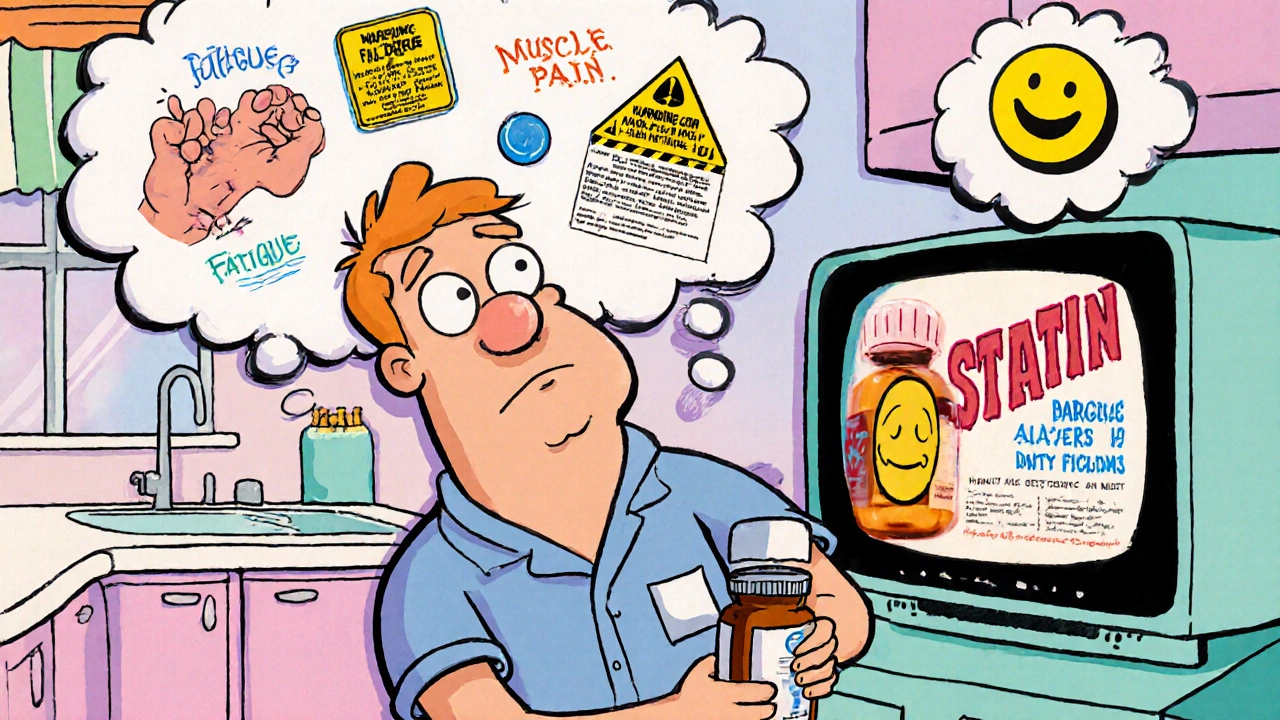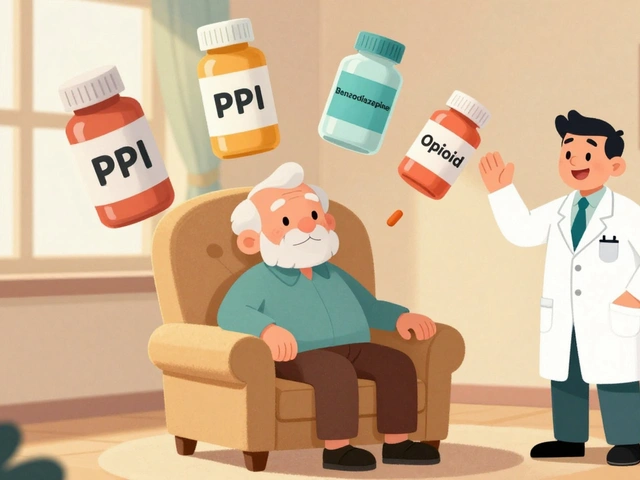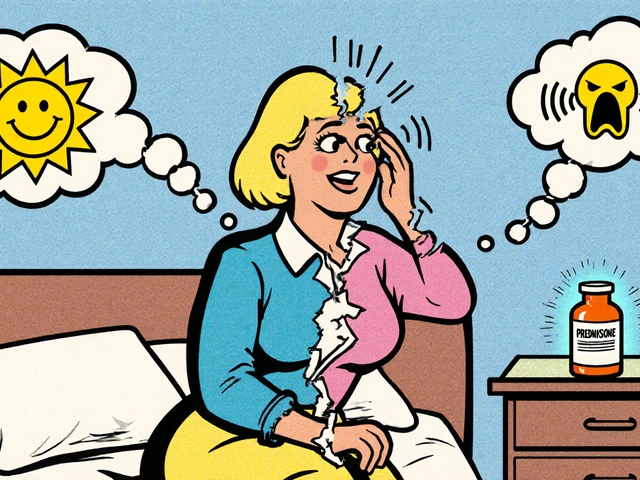More than half of people who stop taking statins do so because they believe the drug is causing muscle pain, fatigue, or other side effects. But what if most of those symptoms aren’t actually from the statin at all? What if they’re coming from something else entirely - something in your mind?
The Real Reason You Feel Bad on Statins
It’s a common story: You start taking a statin to lower your cholesterol. A few weeks later, your legs feel sore. Your shoulders ache. You’re tired all the time. You read the pamphlet. You scroll through online forums. You hear stories. And you decide: statins aren’t for you. You’re not alone. Up to 70% of people prescribed statins stop taking them within a year. Many doctors assume it’s because the drug is causing real, physical damage. But a landmark study from 2021 - called SAMSON - turned that assumption upside down. The SAMSON trial followed 60 people who had already quit statins because of side effects. These weren’t people with mild complaints. They were people who had given up after trying multiple statins, convinced the drugs were harming them. The researchers gave each person 12 bottles over 12 months: four with actual statin (atorvastatin), four with dummy pills (placebo), and four empty bottles. No one knew which was which. Participants tracked their symptoms every day using a smartphone app, rating pain, fatigue, and discomfort on a scale from 0 to 100. The results were shocking. When people took the statin, they reported symptoms. When they took the placebo, they reported nearly the same symptoms. When they took nothing at all? Symptoms dropped by more than half. The nocebo ratio? 0.90. That means 90% of the symptoms people blamed on statins were also happening when they took sugar pills. In other words, the drug wasn’t causing most of the discomfort. The expectation of side effects was.What Is the Nocebo Effect?
The nocebo effect is the dark twin of the placebo effect. Placebo is when you feel better because you believe a treatment will help. Nocebo is when you feel worse because you believe a treatment will hurt you. It’s not "all in your head" in the dismissive sense. The pain is real. The fatigue is real. Your body reacts - but not because of the chemistry of the drug. It’s because your brain, primed by warnings, ads, Reddit threads, and even doctor’s office brochures, triggers real physical responses. Stress hormones rise. Muscle tension increases. Your nervous system goes on high alert. This isn’t unique to statins. But statins are one of the clearest examples we have. Why? Because they’re taken by millions. Because the side effect warnings are loud. And because the symptoms - muscle aches - are common in everyday life anyway. A 2021 meta-analysis of over 18,000 people in blinded trials found no difference in muscle pain between statin and placebo groups. But in real-world, non-blinded studies? Up to 20% of people report muscle pain. That gap? That’s the nocebo effect in action.Why Statins Are Different
Other medications have side effects. But few have the same level of public fear attached to them. Why? First, statins are prescribed to healthy people. You’re not sick. You’re taking a pill to prevent something that might happen years from now. That makes you more sensitive to any discomfort. Second, the side effect warnings are everywhere. The FDA label for statins lists muscle pain as a possible side effect. Pharmacies print it on the bottle. TV ads mention it. Online searches return horror stories. Even the word "statin" can trigger anxiety in people who’ve heard the rumors. Third, muscle aches are common. You get them from exercise, stress, aging, poor sleep. When you start a statin, any ache becomes a red flag. You start noticing them more. You blame the pill. And your brain reinforces the connection. The SAMSON trial proved that the timing of symptoms doesn’t prove causation. People felt worse within days of starting statins - but also within days of starting placebos. Symptoms faded just as fast when they stopped either. That’s not how a drug’s chemistry works. It’s how the mind works.
What About Real Statin Side Effects?
This isn’t about dismissing real harm. There are people who truly react badly to statins. But they’re rare. True statin-induced muscle damage - called myopathy - happens in about 5 out of every 100 people. Rhabdomyolysis, a severe form that can damage kidneys, occurs in fewer than 1 in a million people per year. These are medical emergencies. They show up with very high levels of muscle enzymes in blood tests. The SAMSON trial specifically excluded people with these conditions. It focused on those with subjective symptoms - the kind you feel, not the kind a lab can measure. If you have muscle pain, weakness, or dark urine, get your blood tested. If your CPK levels are normal and your symptoms disappear during placebo periods, you’re likely experiencing the nocebo effect - not a toxic reaction.What Happens When You Learn the Truth?
The most powerful part of the SAMSON trial? What happened after. After seeing their own data - how their symptoms were just as bad on sugar pills as on real statins - half the participants chose to restart statins. Many did so without any problems. One 72-year-old woman in the UK had stopped statins after three tries. She had muscle pain every time. After seeing her symptom logs, she restarted rosuvastatin at a low dose. Within weeks, her cholesterol dropped from 142 to 68. She’s been symptom-free for over a year. This isn’t anecdotal. Clinics that adopted the SAMSON approach saw statin restart rates jump from 22% to nearly 50%. Patients who understood the nocebo effect felt empowered. They weren’t being told they were crazy. They were shown evidence - their own evidence - that their body was reacting to fear, not the drug.What Should You Do If You Think Statins Are Causing Side Effects?
Don’t quit cold turkey. Don’t assume it’s the drug. Don’t assume it’s all in your head. Do this:- Track your symptoms for two weeks. Use a notebook or phone app. Rate pain, fatigue, sleep, and mood daily.
- Talk to your doctor. Ask if you can try a placebo-controlled test. Some clinics now offer simple n-of-1 trials like SAMSON.
- If that’s not possible, take a break. Stop the statin for 4 weeks. Track your symptoms. Then restart at a lower dose. See if symptoms return.
- Consider switching to a different statin. Not all statins are the same. Rosuvastatin and pravastatin tend to have fewer reported side effects.
- Don’t blame yourself. The nocebo effect is real - and it’s not weakness. It’s how human brains work.







Andrew Forthmuller
November 13, 2025 AT 04:58So you're telling me my aching legs for 3 months weren't from the statin... but from reading too many Reddit threads?
Elizabeth Buján
November 13, 2025 AT 21:51I used to think I was broken because I couldn't tolerate statins. Then I did the placebo thing and realized I felt just as bad on sugar pills. My body wasn't rejecting the drug - my brain was screaming 'DANGER' every time I swallowed a pill. It's wild how fear can make you feel physically ill. I'm back on rosuvastatin now and honestly? My legs haven't hurt this good in years.
Benjamin Stöffler
November 14, 2025 AT 00:08Wait-so you're saying that if I believe I'm going to get side effects, my body will manufacture them? That’s not science-that’s magical thinking! And yet… I’ve seen it. I’ve lived it. I’ve watched my aunt swear she couldn’t handle atorvastatin… then she took a placebo and complained about the same symptoms. It’s like our minds are wired to confirm our fears. The nocebo effect isn’t just a phenomenon-it’s a trap we all fall into, especially when we’re scared of losing control over our bodies.
vanessa k
November 15, 2025 AT 13:47I get it. I stopped statins after my dad had a bad reaction. I thought I was being responsible. But then I started tracking my symptoms like the article said-and I realized I was feeling worse on days I *thought* I’d taken the pill, even when I hadn’t. It wasn’t the drug. It was the dread. I’m not saying it’s easy to go back. But maybe we’re not weak for feeling this way-we’re just human. And humans are terrible at separating fear from fact.
manish kumar
November 17, 2025 AT 13:08As someone from India where statin use is rising rapidly and healthcare access is uneven, this is critical. In rural clinics, patients are often told, 'This pill will make you weak,' before they even take it. No one explains the nocebo effect. So when they feel tired, they blame the medicine. And they stop. Meanwhile, heart disease kills more people here than anywhere else. We need doctors to talk about this openly-not just in fancy Western trials, but in village health camps, in local languages, with simple charts and stories. Knowledge isn’t just power-it’s survival. And if we can help people understand that their pain might be fear, not chemistry, we could save millions from preventable heart attacks.
Nicole M
November 18, 2025 AT 14:10I tried this. Took a placebo for two weeks. Felt worse. Took the statin. Felt the same. Then I read the study again and realized I’d been blaming the pill for every ache since 2018. Turns out I’ve had chronic muscle pain from sitting at a desk all day. The statin just gave me a convenient scapegoat. I’m back on it. No more mystery aches. Just good old ergonomic pain.
Arpita Shukla
November 19, 2025 AT 12:08Actually, the SAMSON trial had a small sample size-only 60 people. That’s not statistically significant for a population of millions. Also, the trial was conducted in the UK, where healthcare culture and patient expectations differ from the US. Plus, self-reported symptoms are notoriously unreliable. You can’t measure biological impact with a smartphone app. The real issue is that this article oversimplifies a complex pharmacological interaction. Statins *do* cause myopathy in susceptible individuals, and dismissing all reports as nocebo is dangerous. Just because 90% of symptoms are psychological doesn’t mean the other 10% aren’t real-and potentially lethal.
Mark Rutkowski
November 20, 2025 AT 03:39There’s something deeply poetic about this. We live in a world where we’re told to trust our bodies-but our bodies have been trained by fear, by ads, by horror stories whispered in waiting rooms. The nocebo effect isn’t a flaw in our biology. It’s a mirror. It shows us how much power we give to stories-especially scary ones. We don’t need more drugs. We need better narratives. We need to stop whispering ‘side effects’ like curses and start talking about healing like a conversation, not a threat. Maybe the real medicine isn’t in the pill. Maybe it’s in the quiet moment when you realize: I’m not broken. I’m just afraid. And that’s okay.
Ryan Everhart
November 20, 2025 AT 21:41So let me get this straight-you want me to believe that millions of people are just imagining their muscle pain because they read a warning label? That’s the most condescending thing I’ve read all year. Next you’ll tell me people with chronic fatigue are just stressed. Or that diabetics are just bad at eating cookies. Real people have real pain. And if you’ve never had to walk with aching legs for weeks, maybe don’t call it ‘all in the head.’
David Barry
November 21, 2025 AT 12:14Let’s not pretend this is some revolutionary breakthrough. The nocebo effect has been documented since the 1950s. What’s new is the marketing spin-‘Oh, it’s not the drug, it’s your mindset!’-which conveniently absolves pharma of liability and doctors of counseling. The real issue? Drug labels are terrifying. Ads exaggerate risks. And patients aren’t given tools to distinguish real toxicity from psychological noise. So yes, the nocebo effect is real. But it’s not the problem-it’s the symptom. The problem is a system that scares people into quitting life-saving meds. Fix the messaging. Not the patients.